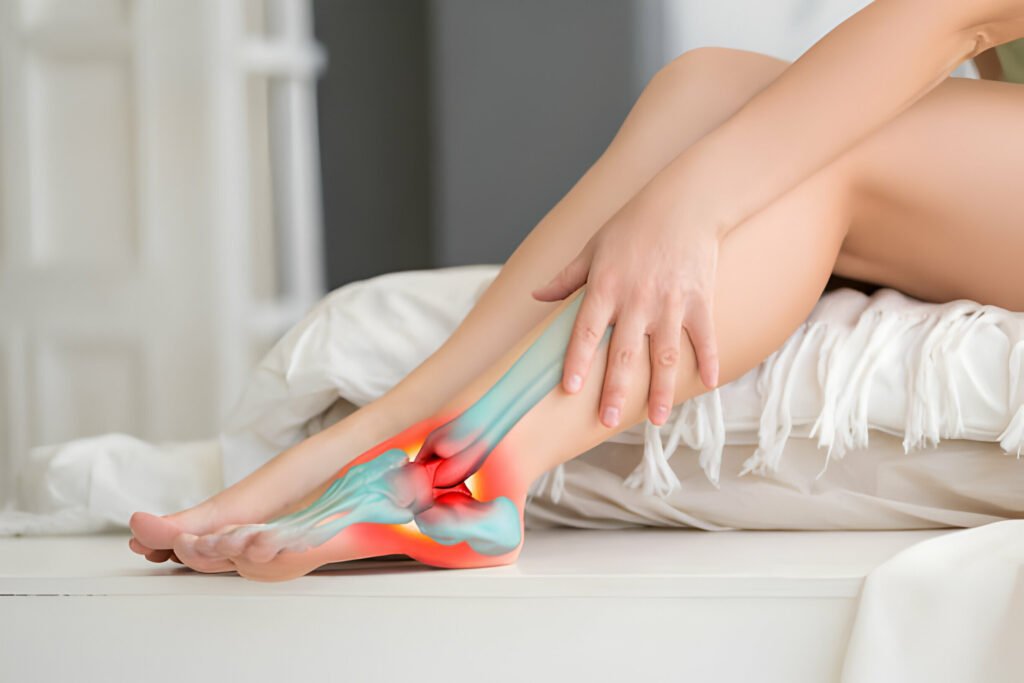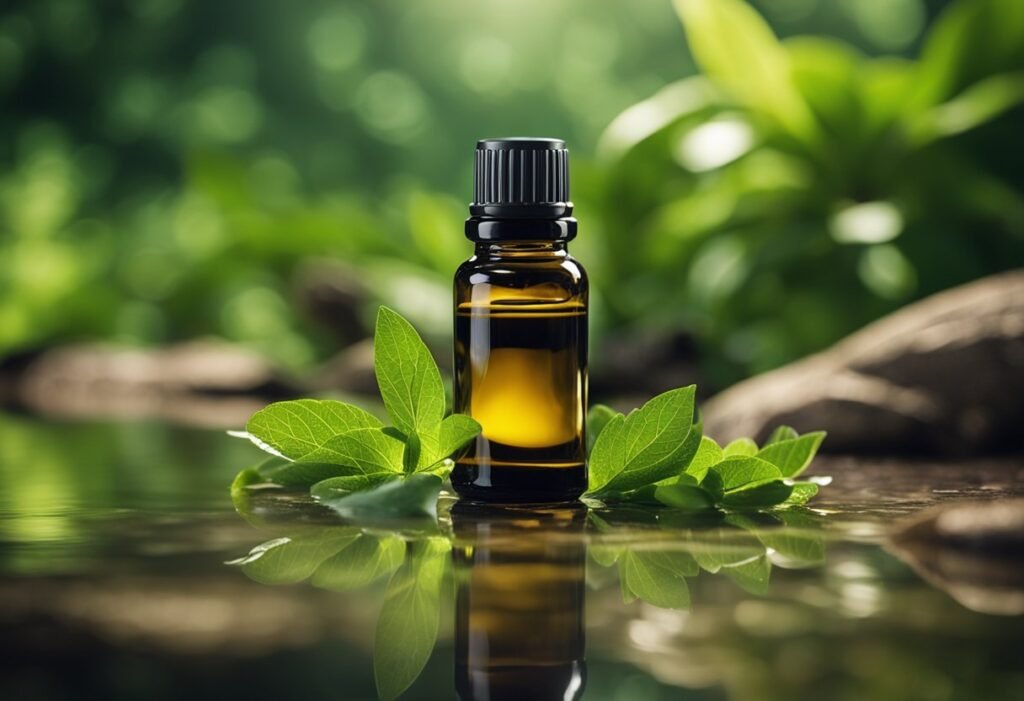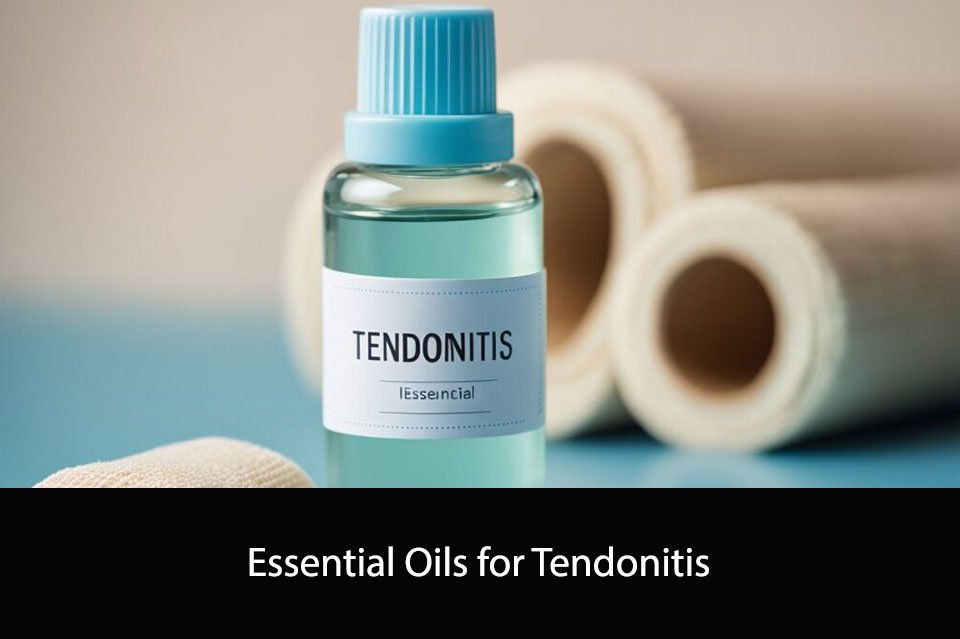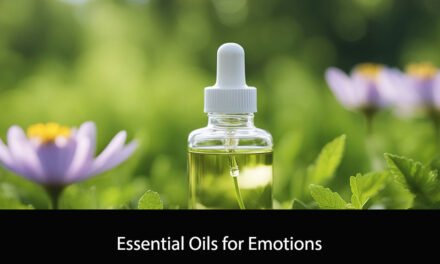Tendonitis is a common condition that can cause pain and discomfort in the joints. It occurs when the tendons, which connect muscles to bones, become inflamed or irritated. This can happen due to overuse, injury, or other factors. While there are many treatments available for tendonitis, some people are turning to essential oils as a natural alternative.
Essential oils are highly concentrated extracts from plants that are believed to have therapeutic properties. They have been used for centuries to treat a variety of ailments, including pain and inflammation. Some essential oils are particularly effective for treating tendonitis, as they can help to reduce pain and swelling while promoting healing. In this article, we will explore some of the best essential oils for tendonitis and how to use them safely and effectively.
Understanding Tendonitis

Tendonitis is a condition that occurs when a tendon, which connects muscle to bone, becomes inflamed. This inflammation can cause pain, stiffness, and swelling in the affected area. Tendonitis can occur in any tendon in the body, but it is most common in the shoulders, elbows, wrists, knees, and ankles.
There are several causes of tendonitis, including overuse, repetitive motions, and injury. Athletes, musicians, and people who perform manual labor are at an increased risk of developing tendonitis. Other risk factors include age, poor posture, and certain medical conditions.
The symptoms of tendonitis can vary depending on the location of the affected tendon. Common symptoms include pain, stiffness, and swelling. In some cases, there may be a clicking or popping sensation when moving the affected joint. If left untreated, tendonitis can lead to chronic pain and even permanent damage to the affected tendon.
Fortunately, there are several natural remedies that can help alleviate the symptoms of tendonitis. Essential oils, in particular, have been shown to be effective in reducing pain and inflammation associated with tendonitis. In the next section, we will discuss some of the best essential oils for tendonitis and how to use them.
Essential Oils Overview

When it comes to managing tendonitis, essential oils can be a useful tool. These highly concentrated plant extracts contain a range of therapeutic properties that can help reduce inflammation, ease pain, and promote healing. However, it’s important to use essential oils safely and appropriately. Here’s what you need to know.
Properties of Essential Oils
Essential oils are made up of a complex mix of chemical compounds that give them their unique properties. For example, some essential oils are anti-inflammatory, meaning they can help reduce swelling and pain. Others are analgesic, which means they can help relieve pain. Some essential oils also have antimicrobial properties, which can help prevent infection.
It’s important to note that not all essential oils are created equal. Different oils have different properties, and some may be more effective than others for managing tendonitis. For example, peppermint oil is known for its pain-relieving and anti-inflammatory properties, while lavender oil is more commonly used for its calming and relaxing effects.
Safety and Dilution Guidelines
While essential oils can be helpful for managing tendonitis, it’s important to use them safely. Essential oils are highly concentrated, which means they can be irritating or even harmful if used improperly. Here are some guidelines to keep in mind:
- Always dilute essential oils before using them on your skin. Most essential oils should be diluted in a carrier oil, such as coconut oil or jojoba oil.
- Use essential oils sparingly. A little goes a long way, and using too much can increase the risk of irritation or adverse reactions.
- Test a small patch of skin before using an essential oil for the first time. This can help you determine if you have any allergies or sensitivities.
- Avoid using essential oils near your eyes or mucous membranes. If you do get essential oil in your eyes, flush with water immediately.
- Keep essential oils out of reach of children and pets. Some oils can be toxic if ingested.
By following these guidelines, you can safely and effectively use essential oils to manage tendonitis. Just remember to always consult with a healthcare provider before using essential oils, especially if you have any underlying health conditions or are taking medications.
Best Essential Oils for Tendonitis

When it comes to treating tendonitis, essential oils can be a great natural remedy. Here are some of the best essential oils that can help alleviate the symptoms of tendonitis:
Lavender Oil
Lavender oil is known for its calming and relaxing properties. It can help reduce inflammation and pain associated with tendonitis. Applying a few drops of lavender oil on the affected area can provide relief and promote healing.
Peppermint Oil
Peppermint oil is a natural pain reliever and anti-inflammatory agent. It can help reduce swelling and ease the pain associated with tendonitis. Applying a few drops of peppermint oil on the affected area can provide immediate relief.
Eucalyptus Oil
Eucalyptus oil has anti-inflammatory and analgesic properties that can help reduce pain and inflammation associated with tendonitis. It can also improve blood circulation, which can promote healing. Applying a few drops of eucalyptus oil on the affected area can provide relief.
Rosemary Oil
Rosemary oil is known for its analgesic and anti-inflammatory properties. It can help reduce pain and inflammation associated with tendonitis. Applying a few drops of rosemary oil on the affected area can provide relief and promote healing.
In conclusion, essential oils can be a great natural remedy for treating tendonitis. However, it is important to use them properly and under the guidance of a healthcare professional.
Application Methods for Tendonitis
When it comes to using essential oils for tendonitis, there are several application methods to choose from. In this section, we will discuss the three most common methods: topical application, compresses, and massage therapy.
Topical Application
Topical application is the most common method of using essential oils for tendonitis. To apply the oil topically, you can mix a few drops with a carrier oil, such as coconut or jojoba oil, and massage it into the affected area. Alternatively, you can add a few drops of essential oil to a warm bath and soak for 20-30 minutes.
Some essential oils that are commonly used for topical application include peppermint, eucalyptus, and lavender. These oils have anti-inflammatory and analgesic properties that can help reduce pain and swelling associated with tendonitis.
Compresses
Compresses are another effective way to use essential oils for tendonitis. To make a compress, add a few drops of essential oil to a bowl of warm water. Soak a clean cloth in the water, wring it out, and apply it to the affected area for 10-15 minutes.
Some essential oils that are commonly used for compresses include ginger, frankincense, and chamomile. These oils have anti-inflammatory and pain-relieving properties that can help reduce swelling and discomfort.
Massage Therapy
Massage therapy is a great way to use essential oils for tendonitis, as it allows for deeper penetration of the oils into the affected tissues. To use essential oils for massage therapy, mix a few drops with a carrier oil and massage it into the affected area using gentle, circular motions.
Some essential oils that are commonly used for massage therapy include rosemary, peppermint, and lemongrass. These oils have analgesic and anti-inflammatory properties that can help reduce pain and inflammation associated with tendonitis.
Overall, there are several effective ways to use essential oils for tendonitis. By using these application methods, you can experience relief from pain and inflammation associated with this condition.
Complementary Therapies
Physical Therapy
In addition to using essential oils for tendonitis, physical therapy can be an effective complementary therapy. Physical therapy can help reduce pain and inflammation, improve range of motion, and strengthen the affected area. A physical therapist can create a personalized plan of exercises and stretches to help manage tendonitis symptoms.
Nutritional Support
Nutritional support is another important complementary therapy for tendonitis. Eating a healthy, balanced diet can help reduce inflammation and promote healing. Foods rich in omega-3 fatty acids, such as salmon and walnuts, can be particularly beneficial. Additionally, supplements such as turmeric and ginger can have anti-inflammatory properties and may help manage tendonitis symptoms.
Overall, using complementary therapies in conjunction with essential oils can be a helpful approach to managing tendonitis. It’s important to consult with a healthcare professional before starting any new complementary therapy.
Prevention and Maintenance

Strengthening Exercises
We can prevent and manage tendonitis by doing strengthening exercises. These exercises help to build the muscles around the affected tendon, reducing the strain on the tendon itself. Strengthening exercises also help to improve flexibility and range of motion, reducing the risk of injury.
Some effective exercises for preventing and managing tendonitis include:
- Eccentric exercises: These exercises involve slowly lowering a weight instead of lifting it. Eccentric exercises have been found to be particularly effective for managing Achilles tendonitis.
- Isometric exercises: These exercises involve holding a weight or resistance in a fixed position. Isometric exercises can help to build strength without putting too much strain on the tendon.
- Resistance band exercises: Resistance bands are a great tool for building strength and improving flexibility. They can be used to target specific muscle groups and can be easily adjusted to suit different levels of strength.
Ergonomic Adjustments
We can also prevent and manage tendonitis by making ergonomic adjustments to our work environment. Ergonomic adjustments can help to reduce the strain on our tendons and muscles, reducing the risk of injury.
Some ergonomic adjustments that can be made include:
- Adjusting the height of our desk and chair to ensure that our arms are at a comfortable angle when typing or using a mouse.
- Using an ergonomic mouse or keyboard that is designed to reduce strain on our hands and wrists.
- Taking regular breaks to stretch and move around, particularly if we spend long periods of time sitting at a desk.
By incorporating strengthening exercises and ergonomic adjustments into our daily routine, we can prevent and manage tendonitis, reducing the risk of injury and improving our overall health and wellbeing.
Frequently Asked Questions
Which essential oils are recommended for aiding in tendon repair?
We recommend using essential oils that have anti-inflammatory and analgesic properties for aiding in tendon repair. Some of the essential oils that are known to be beneficial for tendon repair are peppermint, lavender, eucalyptus, and frankincense.
How can essential oils be applied to alleviate tendonitis in the foot?
Essential oils can be applied topically to alleviate tendonitis in the foot. We recommend diluting the essential oil with a carrier oil, such as coconut oil or almond oil, before applying it to the affected area. You can also add a few drops of the essential oil to a warm foot bath and soak your feet for 15-20 minutes.
Among all essential oils, which one is considered the most potent for pain relief?
There is no one essential oil that is considered the most potent for pain relief. However, some of the essential oils that are known to be effective for pain relief are peppermint, lavender, eucalyptus, and ginger.
What are the best practices for using essential oils to treat tendonitis in the elbow?
We recommend diluting the essential oil with a carrier oil before applying it topically to the affected area. You can also apply a few drops of the essential oil to a warm compress and apply it to the affected area for 10-15 minutes. We also recommend avoiding any strenuous activity that may aggravate the condition.
Are there any essential oils specifically beneficial for reducing pain and inflammation?
Yes, some of the essential oils that are specifically beneficial for reducing pain and inflammation are peppermint, lavender, eucalyptus, ginger, and frankincense. These essential oils have anti-inflammatory and analgesic properties that can help alleviate pain and inflammation.
What essential oils are known to help in the healing of ligaments and connective tissue?
Some of the essential oils that are known to help in the healing of ligaments and connective tissue are frankincense, helichrysum, ginger, and turmeric. These essential oils have anti-inflammatory and analgesic properties that can help reduce pain and inflammation, and promote healing.





